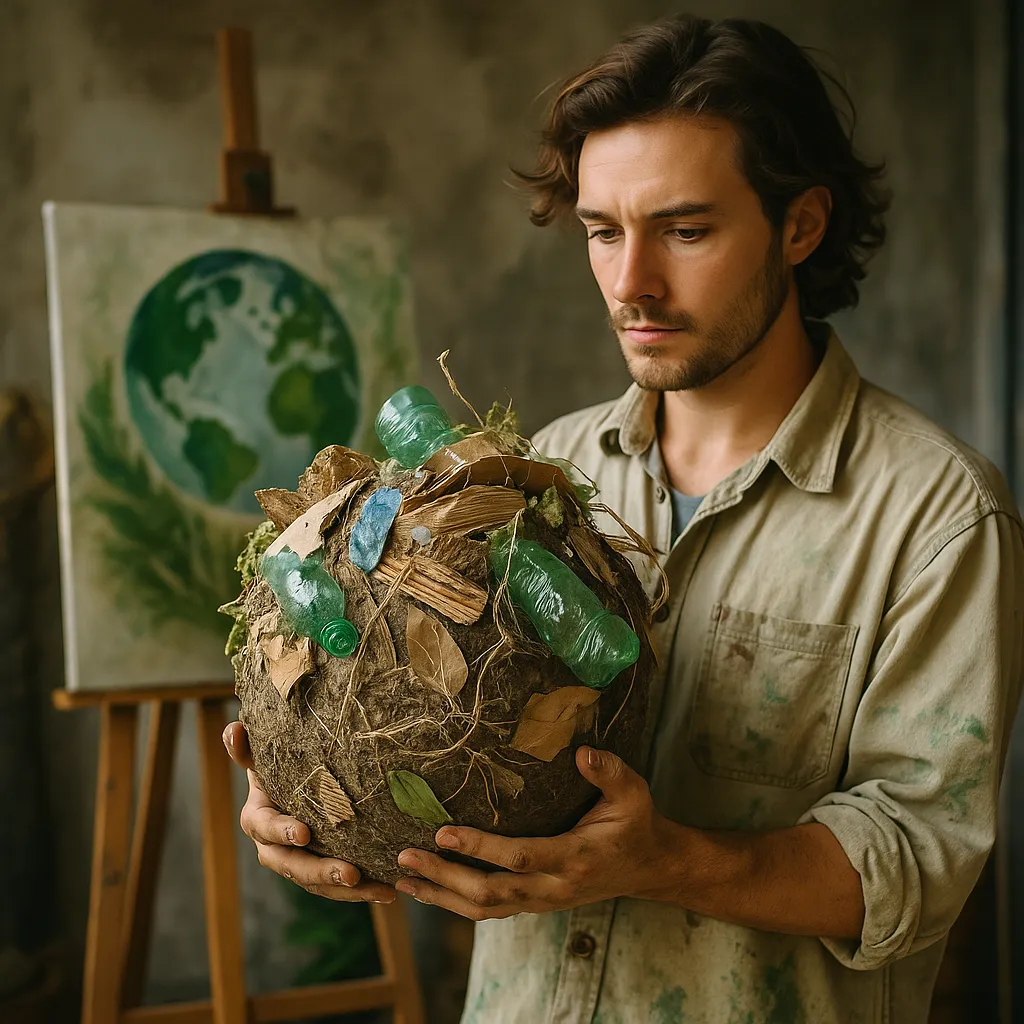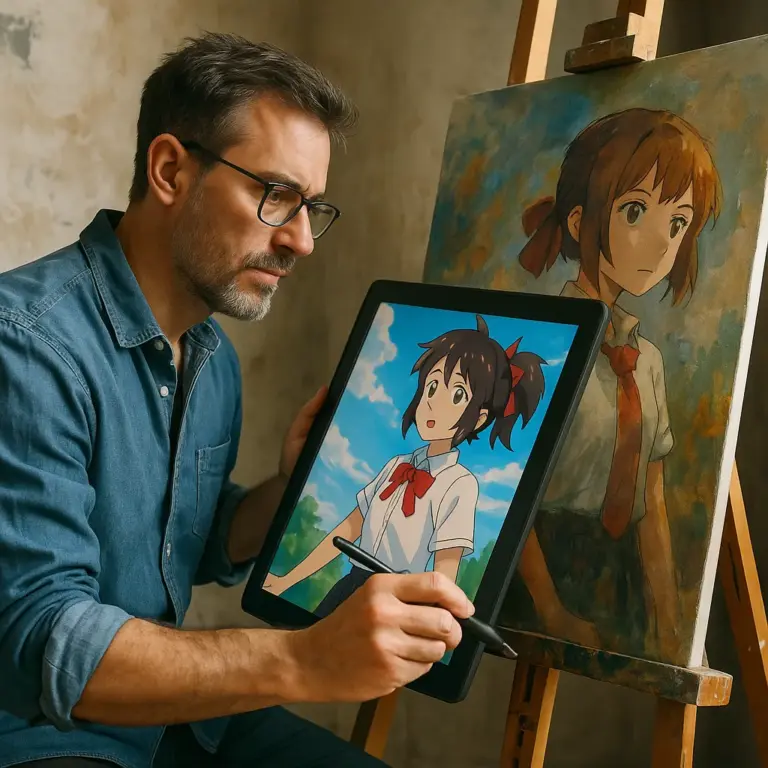Art has always expressed the spirit of its time. In the face of environmental collapse and climate urgency, a direct question echoes through studios, stages, and artist residencies: how can we create without causing harm? The answer lies in sustainable art — an approach that merges aesthetics, ethics, and ecology. Here, the focus is not just on the visual result, but also on the impact of the materials used, production processes, and the relationship between the work and its environment.
What Defines Sustainable Art
Sustainable art (or “sustainable art”) refers to creative practices that involve:
- Recycled, reused, or low-impact materials
- Awareness of the artwork’s lifecycle, from raw material sourcing to disposal
- Use and appreciation of local resources and techniques
- Themes addressing the relationship between nature and society
This type of creation can range from a small sculpture made with organic waste to large installations in abandoned spaces, involving entire communities in the creative process.
From Waste to Language: The Value of Materials
Those who work with sustainable art see waste as a powerful creative source. What once ended up in the trash now becomes a form of expression. Commonly used materials include:
- Handmade paper from plant fibers
- Repurposed fabrics dyed with natural pigments
- Wood and metals salvaged from demolished structures
- Plastics collected through environmental efforts and educational events
More than just recycling, the goal is to make the process visible. Understanding where materials came from, how they were transformed, and what will happen to them after the exhibition is a core part of the artwork. This redefines the artist’s role and introduces a new ethic into cultural production.
Today, even 3d modeling services are being used to simulate sustainable structures before actual implementation — optimizing resources and reducing waste.
When the Theme Is Also the Medium
Many artists go beyond using eco-friendly materials and place nature itself at the center of their narrative. Instead of depicting a forest, they use leaves, roots, and soil as part of the composition. Instead of illustrating climate change, they create outdoor performances that evolve with rain, wind, or sunlight.
These works are often ephemeral, returning to the environment after the exhibition ends. It’s a language that respects nature’s rhythm and aligns with practices like slow art. In many projects, tools such as 3d modeling services help plan the environmental and physical impact of installations, anticipating structural and visual concerns.
Table: Materials and Strategies in Sustainable Art
| Material / Technique | Origin / Process | Example of Use |
|---|---|---|
| Paper from plant fibers | Local artisanal production | Ephemeral sculptures and collages |
| Naturally dyed fabrics | Reused clothing or donations | Costumes in dance and theater performances |
| Scrap metal and wood | Demolitions and abandoned construction | Outdoor installations with modular design |
| Collected plastics | Community cleanups and educational actions | Thematic panels or interactive sculptures |
| 3d modeling services | Pre-production simulation and optimization | Temporary structures in natural environments |
The Power of Locality and Collective Creation
Sustainable art rarely emerges from isolation. On the contrary, it is grounded in place, people, and shared knowledge. Many artists develop projects in collaboration with:
- Local masters and artisans
- Residents involved in collecting and preparing materials
- Public schools and environmental movements
This shifts the focus from just the final object to the process — who participated, how, and why. In rural areas, this model becomes even stronger, as it directly connects with subsistence practices, ancestral techniques, and community values.
Many projects use 3d modeling services to align planning with local participants, presenting accessible digital models before building physical prototypes.
Sustainability on Stage
Theater, dance, and circus are also rethinking their formats through the lens of sustainability. Instead of building elaborate stage sets, many groups now:
- Reuse elements from past productions
- Sew costumes from repurposed fabrics
- Replace traditional lighting with LED fixtures
- Design performances for open-air spaces to avoid stage construction
These choices not only reduce environmental impact but also open up new forms of expression and improvisation. Lighter materials inspire more agile and creative productions. With the support of 3d modeling services, companies can preview scenography in 3D, facilitating decisions and optimizing time and energy.
Rethinking Beauty: Ethics and Aesthetics Together
Sustainable art encourages a reconfiguration of how we see. Beauty is no longer just about polished form — it’s in the gesture of care, in ethical processes, and in connection with the earth. It’s an aesthetic of what’s real, what’s possible, and what’s necessary.
In this context, digital services are not nature’s enemy — they can be powerful allies. By using 3d modeling services, artists can reduce excessive material use, test solutions virtually, and visually construct a more balanced future.
The Present Is Already Sustainable
Sustainable art is not a future trend — it’s already here, in schools, festivals, museums, and neighborhoods. It’s a growing practice that breaks with the logic of excess and opens the door to a new way of creating — more conscious, more collaborative, and more rooted.
If you work in visual arts, performance, scenography, or installations, it’s worth asking yourself: how were my materials produced? What will happen to them afterward? And how can 3d modeling services help me reduce impact and expand meaning?




